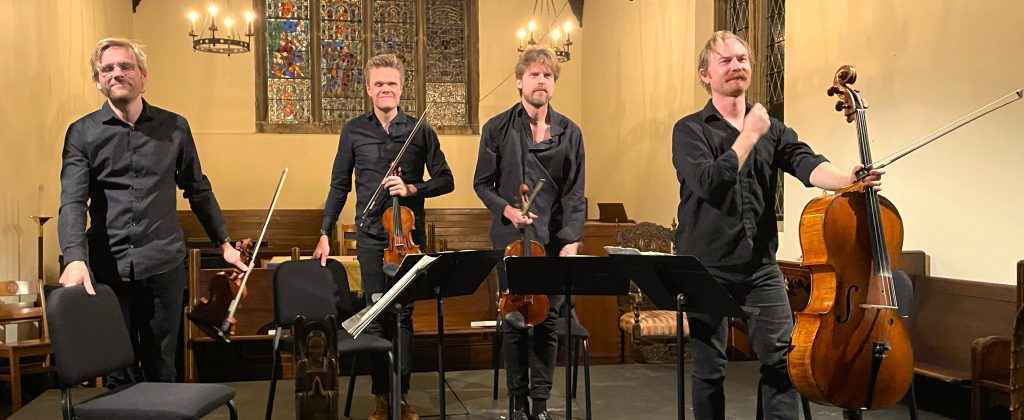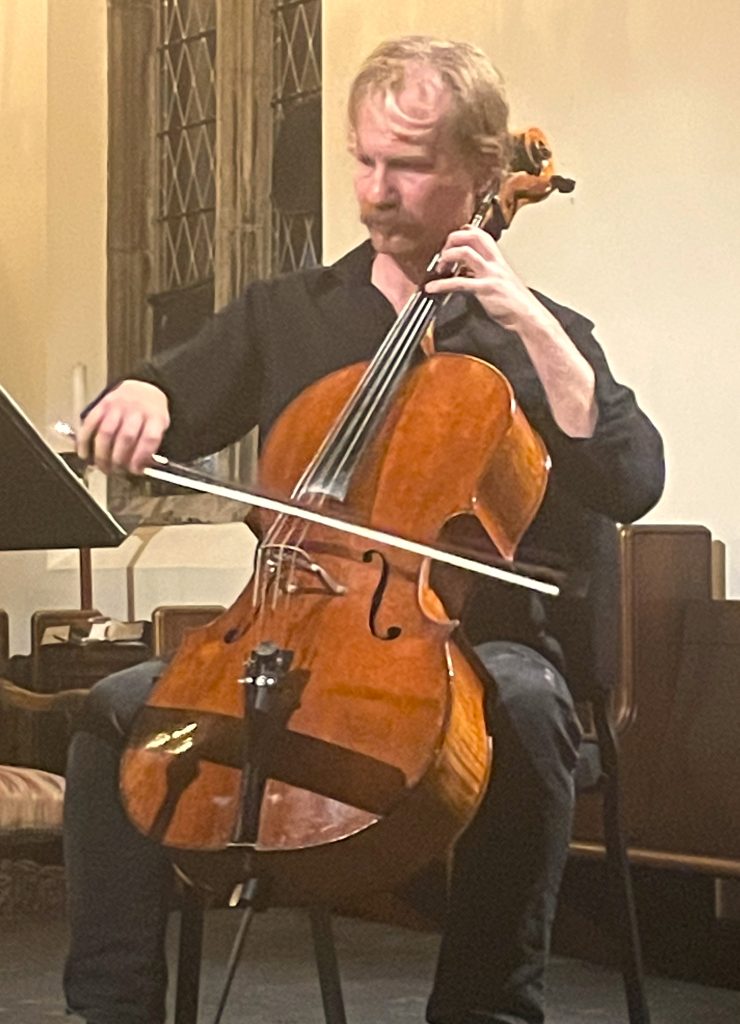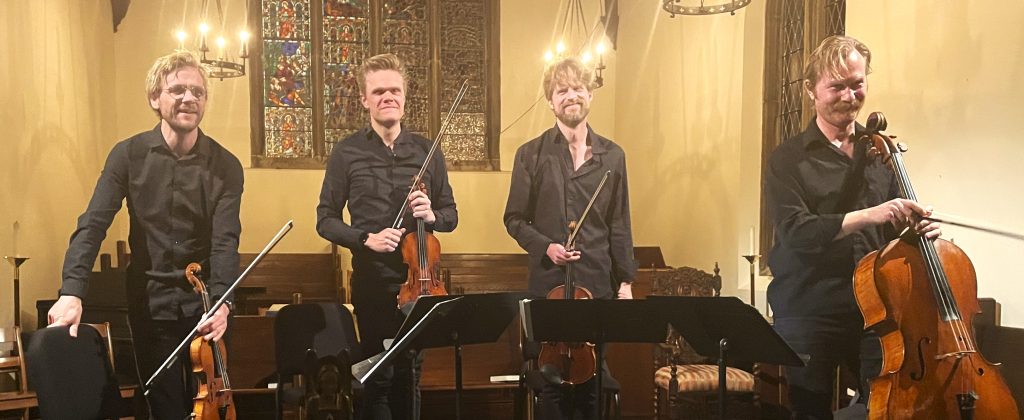
by Kevin T McEneaney
At Trinity-Pawling School Chapel last Friday night, the Danish String Quartet offered an integrated, blended, multi-level soundscape. They opened with String Quartet, Op. 20, #3 in G minor, a lively, witty dinner conversation between four intelligent men discussing social affairs. The outer movements of the instruments offer an elliptical structure that enhances spontaneous humor as each instrument personality participates in vigorous repartee. The four quartets of Opus 20 profoundly influenced both Mozart and Beethoven.
My conjecture on this work is that this represents a court dinner. At the table are the King (first violin) and Queen (second violin) with the Treasurer (cello) and his wife (viola). The King speaks of possible extravagant projects and feasts with added suggestions by the Queen while the Treasurer replies with the estimated cost of these projects with a sense of humor. The cello checks the fantasies of the King with reality—the cello is the dominant player because it is grounded in reality, not tempted by the grandiose indulgences of the King.

Fredrik Schøyen Sjӧlin on cello delivered stern comic replies to Frederik Øland on first violin who floated in genial, exuberant narcissism while the ladies in the background gossiped about who was having affairs and upcoming social events. Tonsgaard Sørensen on second violin was appropriately inquisitive and vain while Asbjørn Nørgaard on viola soberly admitted that things were a bit more complex than the Queen thought while delivering layers of nuanced gossip. This quartet is a favorite of mine and this was the most delicious version I have heard.
Three Pieces for String Quartet (1914, rev. 1918) by Igor Stravinsky was a hoot from beyond our solar system, a satire on the genre of string quartets. The original version was a rambunctious, comic four-hand piano piece. These four instruments wander in a fog or forest and don’t communicate with each other. Perhaps the concept came from the experience of attempting to teach four children how to play in a quartet. This is the most hilarious quartet ever written. There is no way words can describe the amusing anarchy played with such exquisite gusto!
Three melodies by the harpist Turlough O’Carolan (1660-1738) followed. O’Carolan (blinded by smallpox at 18) befriended Arcangelo Corelli in England. O’Carolyn did not speak English well and wrote only one song in English. Only 226 of his melodic tunes have survived. O’Carolyn took traditional Irish tunes and inflected them with elements of Baroque music.

The quartet played a new string arrangement of “Mabel Kelly,” “Planxty Kelly,” and “O’Carolyn’s Quarrel with the Landlady in F-major.” I was not enthusiastic about the first tune, but the second was quite good, and the third was excellent! Carolyn’s music inhabits a netherworld between folk and Baroque music; that ambiguous landscape was successfully enunciated by the ensemble The Chieftains on their many recordings; their harpist Derek Bell was a brilliant arranger.
The second half of the concert was devoted to String Quartet no.15 in G-major, D. 887 (1815) by Franz Schubert which runs for nearly a half hour. While this quartet is often acclaimed by critics as a great masterpiece, I consider it to be an interesting work clearly influenced by Beethoven’s late piano sonatas, Op. 109 & 110.There are many eloquent, interesting, and intense themes and melodies, yet the work does not cohere in its overall structure; its four movements are laden with introspective themes of illness and recovery, yet do not possess the witty humor of a Handel or Beethoven. There are too many digressions that appear and vanish.
As a listener, I felt lost in a forest with evening descending. The best way to attempt to digest this composition is to imagine you are at an immense smorgasbord and that there are so many unknown foods that you are stunned and eat very little. I found harmonies that I wished repeated with varied nuance, texture, and volume, but were not.
This work remains extremely difficult to play, and this quartet played with impressive, astonishing unity. Tonsgaard Sørensen on second violin introduced the work by advising the audience to cling to a fragment and daydream. He was correct. Frederik Øland on first violin and Fredrik Schøyen Sjӧlin on cello excelled high and low to deliver a most memorable performance!

The Danish String Quartet, which has just won the 2025 Léonie Sonning Music Prize, has at least twenty CDs available on the Amazon website.